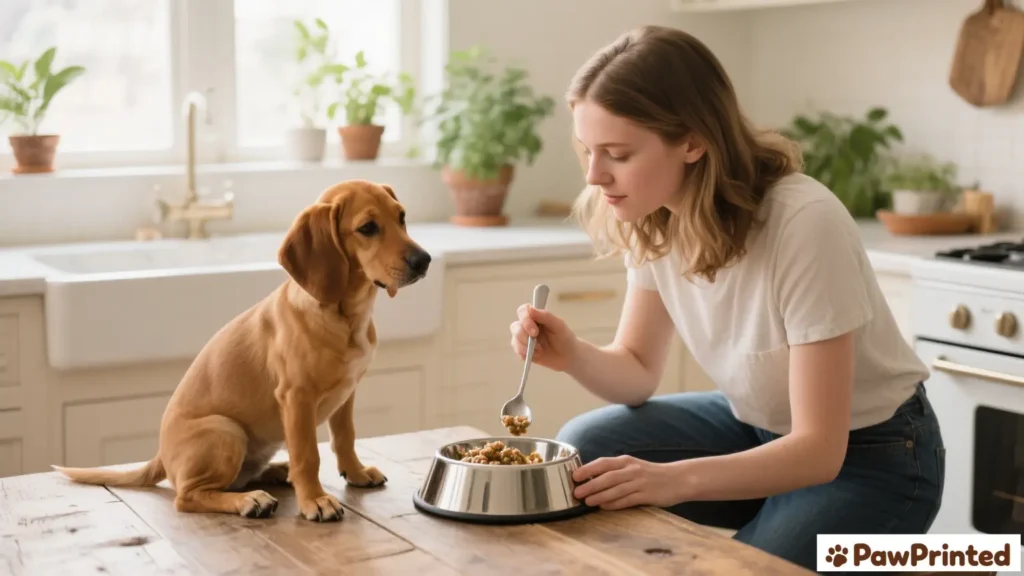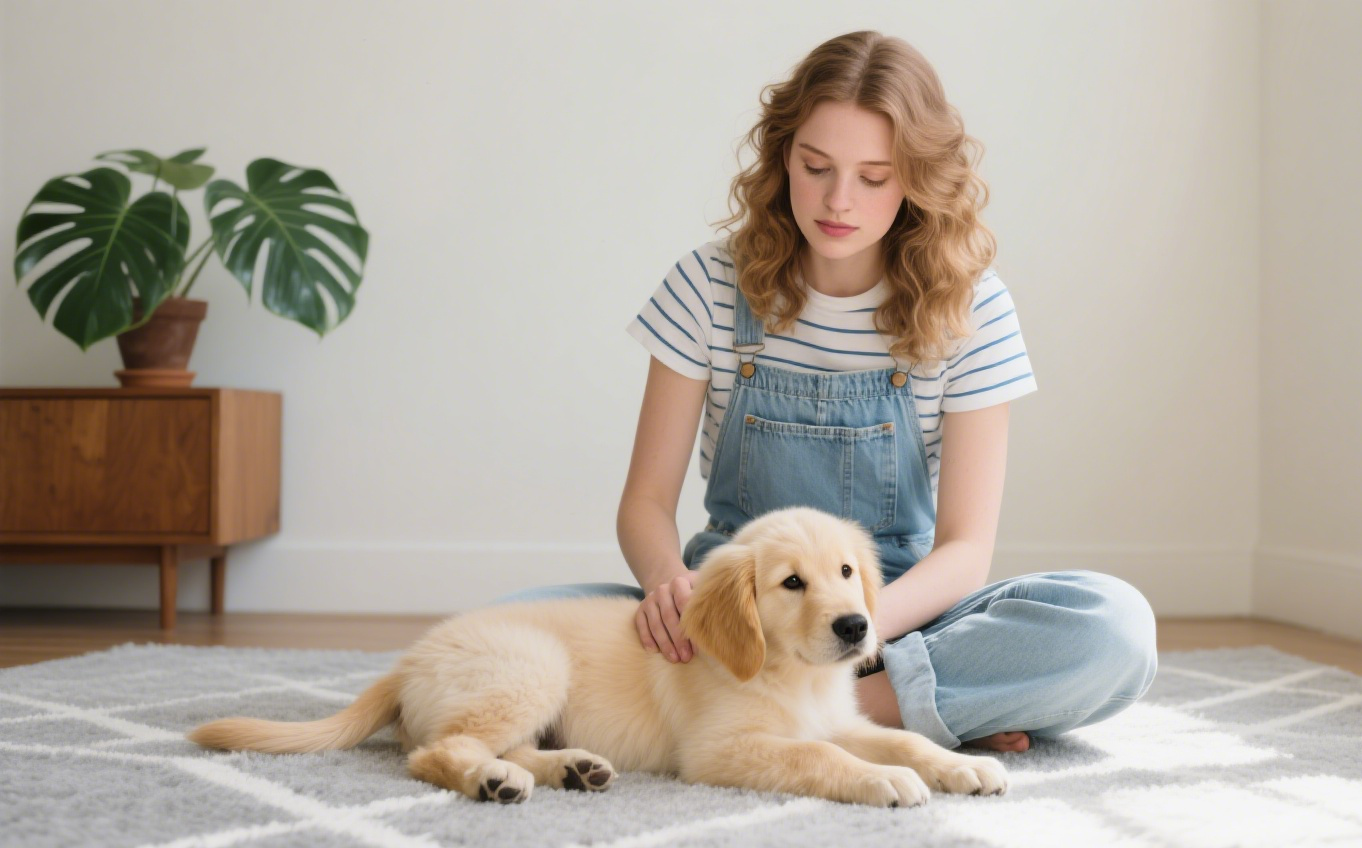I learned the hard way with Ethan: switching food overnight means mopping floors and apologizing to carpets. When we slowed down and tracked bowls like a little science project, his tummy calmed, energy steadied, and the “I’m-not-eating-that” standoffs disappeared. Here’s the simple, vet-approved plan we now use for every switch—dry to dry, dry to wet, or homemade to store-bought.

Why Transitioning Slowly Matters
Your dog’s gut needs time to adjust to new proteins, fats, and fibers. Slow change protects the microbiome, reduces diarrhea or vomiting, and keeps meals predictable. Most families do well with 7–10 days; sensitive tummies or seniors may need 10–14. If you’re switching due to stomach issues, see our Sensitive Stomach & Diarrhea Hub and Dog Food for Diarrhea for backup plans.
Red flag — call your vet: repeated vomiting, blood in stool, black/tarry stool, lethargy, refusal to eat >24h, or sudden weight loss. Pause the switch and get medical advice.
Step-by-Step Transition Schedule
| Day Range | Old Food | New Food | Notes |
|---|---|---|---|
| Days 1–3 | 75% | 25% | Log stool & appetite. Keep water fresh. |
| Days 4–6 | 50% | 50% | Hold treats low; feed on schedule. |
| Days 7–9 | 25% | 75% | Watch for itching, gas, night-time urgency. |
| Day 10+ | 0% | 100% | Transition complete. Keep notes for 1 week. |
Tip: Sensitive stomachs, seniors, or anxious eaters may need a 14-day schedule (increase new food by ~15% every 2–3 days). If stools soften, stay at the current ratio for 48–72 hours before moving on.

Signs of Trouble (and What to Do)
- Loose stool but playful: hold the ratio for 48–72h, add a bland topper (plain pumpkin), consider probiotics.
- Multiple episodes of vomiting or watery diarrhea: pause the switch, offer small amounts of water, call your vet.
- Itching, ear gunk, face rubbing: possible intolerance—review proteins in Allergies Hub or try a limited-ingredient plan.
Tips for a Smooth Switch
- Clockwork meals: same time, same bowl, calm space.
- Measure by calories, not scoops: prevents accidental overfeeding; see Weight Management.
- Improve palatability gently: warm water on kibble or a spoon of the gentle wet picks.
- Support the gut: a daily probiotic during the switch often helps—learn more in Probiotics for Dogs.
- Picky eaters plan: consistency + tiny wins; see Picky Eaters.
Special Cases
Puppies: transition more slowly and keep growth-stage formulas consistent; see Puppy Dog Food Hub. Seniors: favor joint-support formulas and measured calories; see Senior Dog Food. Allergies/sensitivities: change one variable at a time; review LID basics and our Allergies guide.

FAQ
How long should a dog food transition take?
A proper transition usually takes 7–10 days. Start with 25% new food mixed into 75% old food for 2–3 days, then gradually increase the new food portion. Sensitive pups may need up to 2 weeks. Learn more in our sensitive stomach guide.
What if my dog gets diarrhea during the transition?
Mild loose stool can happen when introducing new food. Slow the pace and keep water available. If diarrhea lasts more than 2–3 days or is severe, stop the transition and contact your vet. For dogs with ongoing tummy issues, see our advice on dog food for diarrhea.
Can puppies transition the same way as adults?
Puppies have more sensitive digestion, so go slower—often 10–14 days. Always choose puppy-formulated food for growth needs. See our full guide on puppy dog food for safe options.
Is switching between dry and wet food different?
Yes. Switching between kibble and wet food can affect stool texture and appetite. Always measure carefully to avoid overfeeding. For balanced choices, check our picks for best dry food and best wet food.
What if my dog refuses the new food?
Dogs may resist at first due to unfamiliar smell or texture. Warm the food slightly, or mix in a spoon of plain pumpkin for encouragement. If your dog is picky, explore our picky eater food guide for more strategies.
If you don’t want to cook daily, check our dry food picks — those were Ethan’s daily backups. For sensitive dogs, our limited-ingredient guide can keep variables steady.
Follow PawPrinted on Pinterest
We share calm transition schedules, gentle meal ideas, and vet-approved shortcuts.
You’ve got this. Gentle, steady, and logged—your dog’s gut will thank you.

